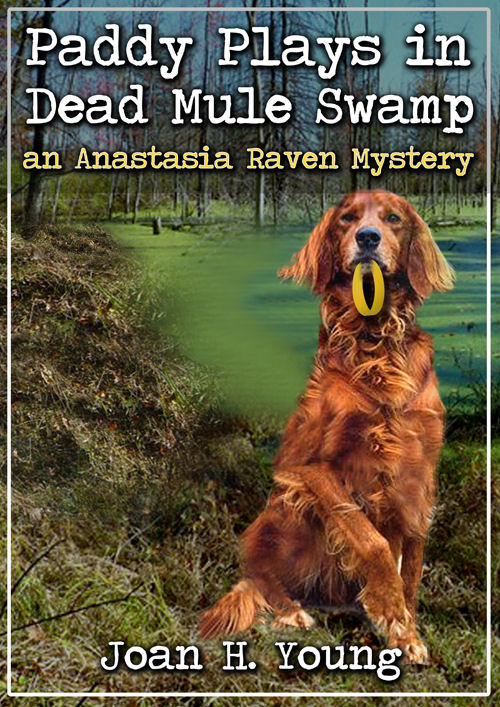This post is just a bit of musing on the topic of mysteries in series, with an emphasis on cozy mysteries.
Someone recently wrote that
News from Dead Mule Swamp is not very realistic. Now, I'm not upset... perhaps it wouldn't be realistic in the world that person inhabits. But it did get me thinking.
Are murder mysteries realistic? Any of them? Books which are not in series might be. Books which are in series with a protagonist who is a policeman/woman, detective or lawyer might be.
Any other mysteries in series are going to be somewhat unrealistic. Right out of the box, it's unlikely that a single, ordinary person is going to encounter one or two murders a year, in which they would get involved.
This is where we get into suspension of disbelief. Every series, even the most famous, are a bit silly if one has to have complete realism. For example, would even a nosy Miss Marple have encountered a murder on every vacation or so often near her little town? Would Perry Mason have won every case? Would Jessica Fletcher find so many murders to solve? Even the TV series had to move her to New York City because soon she was going to have no neighbors left to kill off.
I also read one critique of the "Dead-End Job" cozy mystery series where the rater said it was beyond belief that Helen Hawthorne keeps switching jobs and always getting involved in a murder. Well, yes, of course... but it's actually less silly than that a person would live in one place and keep stumbling on murders.
One could also say that cozy mysteries in general are unrealistic. They tend to have little cussing, little sex, and little "on screen" violence. We've made life so "in-your-face" that it seems unrealistic to leave those parts out, or at least keep them off the page. I think those people who read cozies by choice know perfectly well what real life is like. They simply prefer to leave it out of their entertainment venue. There is plenty of literary fiction available whenever they want a dose of the tragedy of life.
Mysteries, possibly particularly cozy mysteries, are a sort of a cross between fantasy and reality. They are not meant to be like the TV series "Law and Order." (Which is in itself ridiculous because each of their cases is somewhat spectacular- never anything mundane. "ripped from the headlines," you know.)
When reading any series of books one chooses to enter into the world the author has created. This might be a non-fiction world, such as the "Little House on the Prairie" series, or Allen Eckert's "Narratives of America." Or it might be fictional, as in "The Cat Who..." books set in Moose County which is also a fictional location. The Nero Wolfe books are set in the very real New York City, but in a fictional house on a fictional street. If you love Nero Wolfe, you probably carry the floor plan of that house and the daily movements within it in your head.
For readers, those fictional locations have taken substance, and the question is not "is this realistic?" but "is this realistic in this created world?"
 cover design by Farah Evers
cover design by Farah Evers .jpg)

.png)
